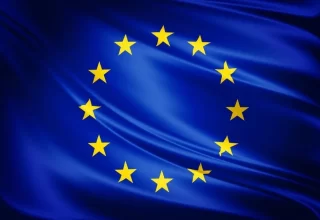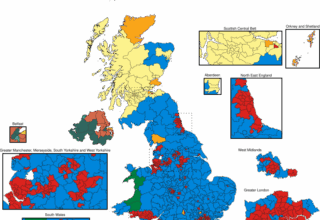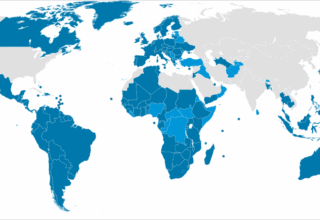
In order to appreciate the tensions in the seas encircling China’s east coast and the fundamental importance of Taiwan it is imperative to understand the geographical conditions and the resulting geopolitical consequences.
The South China Sea stretches over an area of more than 3.6 million km2 with a mean depth of 1,212 m. The Chinese southern provinces of Guangxi and Guangdong constitute the northern border of the sea – with the island of Hainan jutting into the northwestern quadrant – as well as Taiwan and the Taiwan Strait, which connects it to the East China Sea. The Philippines build the eastern border, while the southern one is constituted of the island of Borneo and the Malay Peninsula giving Malaysia, Indonesia and Brunei access to the sea. In the southwestern quadrant lies the Gulf of Thailand a geographical feature due to the Indochinese peninsula that extends into the East China Sea (LaFond, 2021).
The Indonesian Riau Archipelago between Borneo and the Malay Peninsula oversee the Karmimata Strait which connects in the south to the Java Sea and in the northwest to the Strait of Malacca, one of the most important bottlenecks in the world. Hence, this corridor is of utmost significance to all littoral states, and China in particular, as the sea lanes to the Indian Ocean pass through these waters. The archipelago builds the so-called Sunda Shelf which is very shallow with depths between only 30 – 100 m. Besides the Taiwan Strait to the north of the South China Sea, the Luzon Strait between Taiwan and the Philippine Batanes and Babuyan Islands with a depth of ca. 2,600 m constitutes the third important bottleneck connecting the sea to the Philippine Sea and from there to the Pacific Ocean (ibid.).
The South China Sea is shallow along the coasts of China, Vietnam and the Gulf of Thailand, while it falls to depths of up to 5,016 m in the eastern part (China Sea Basin). Surrounding the basin lie the Paracel Islands to the northwest, equidistantly from Hainan and Vietnam, and to the south, the Nanshan and Spratly Islands. Lying in a strategic position with sea lanes passing by as well as potential oil and gas reserves make these islands interesting to the littoral states, which has sparked many disputes over the claimed sovereignty over these islands by all riparian countries. The South China Sea is – just like the East China Sea – rich in marine life, however, it suffers from overfishing. Moreover, there are also significant oil and gas reserves, especially north of Borneo, east of the Malay Peninsula and northwest of Palawan (Philippines). As mentioned above, important sea lanes cross the sea, conveying oil and minerals to the north (in particular to China, Japan) and food and goods to the south (towards the Indian Ocean). The trade volume shipped on the South China Sea figure around $5 trillion annually (Daisaku, 2018). Hence, the claims to Exclusive Economic Zones in the area are cause for various disputes between riparian states. Beijing stands out, though, as their claim to territorial waters there follows the coastlines of the other littoral states (the so-called nine-dashed line), hence, excluding them from profiting from trade flows and exploiting natural resources found there.
Short background of Vietnam-China relations
In the history of Vietnam, the North and South used to be rather culturally and geographically separate parts which were reunited in the late 18th century after a war between the two leading families lasting 150 years. During the French colonial regime (1884-1945), Vietnam was partitioned in three, until Hồ Chí Minh reunited the country again (Ngoc, 2015). After decades of civil war and orthodox communist leadership following WWII, Vietnam’s economic rise began, when Hanoi decided to adopt a new economic policy of “renovation” (Ðôi mó’i in Vietnamese). Based on the introduction of a market economy, the development of the private sector, free(r) competition and the opening of ports to all nations, positive results showed quickly. Vietnam became the world’s largest exporter of rice, coffee and pepper, and managed to sell oil abroad for the first time (ibid.). With its economic development and extension of export activities, Vietnam has become to a degree dependent on China, as the latter represents the former’s 2nd largest export market and an essential source of raw materials. To avoid geo-economic pressure from Beijing, Hanoi is careful to balance applying political pressure on Beijing. Usually, in case of disagreements, both countries’ ruling parties meet to remove before larger conflicts could emerge (Jennings, 2021).
Nevertheless, armed conflicts have taken place regularly between China and Vietnam in their history, since geography invites the two states to cooperate but makes them competitors as well (Jennings, 2021). The last two armed conflicts took place in 1979, when fights on the land border erupted, and in 1988, when China lay hold of the Gạc Ma (or Johnson South or Chiguo) Reef in the archipelago of the Spratly Islands from Vietnam. Relations between them normalized in 1991 though, at a time when Hanoi was diplomatically isolated after the collapse of the Soviet Union, its only remaining ally then (Le Thu, 2020). After the US retreated its troops from the Philippines in 1992, China accelerated its construction of military bases and artificial islands in the South China Sea. Since then, the Chinese regime has stationed missiles and fighter jets on the Paracel Islands and has built military infrastructure such as radar, ports, hangars and landing strips in the Spratly archipelago (Daisaku, 2018). Forced to compromise heavily, Hanoi enacted a new national security policy of the ‘Three Nos’ (to form military alliances, to align with another state against a third one, and to host foreign military bases) (Le Thu, 2020).
Even though bilateral relations between China and Vietnam are rather asymmetric, Beijing is interested in keeping good relations with Hanoi to contradict western voices stating that China does not have any allies or friendly ties in its neighborhood (Jennings, 2021). Areas of continued cooperation between the two exist, as, for example, joint coast guard patrols of the fishing grounds in the Tonkin Gulf, where both states’ borders meet, as well as joined land border controls since 2018 take place. Also, the foreign direct investment from China in Vietnam which had been stagnating for a long time, jumped to almost $400 million in 2015 and has remained high ever since (Ross, 2020). However, as a consequence of continuing Chinese aggressions and pressures, a growing view in Vietnam has taken hold that China is a threat and has a negative impact on the country, while the US is seen as a positive influence by 85% of respondents in the Vietnam Asian Barometer Survey (Xia & Chen, 2021).
China’s geo-economic pressure on Vietnam
After negotiations between Beijing and Hanoi to replace the expired 2005 agreement on joint exploration in disputed waters had failed, in May 2014, the Chinese Haiyang Shiyou 981 oil rig was shipped into the Exclusive Economic Zone claimed by Vietnam. As an answer, Vietnam sent 29 ships to encircle and stop Haiyang Shiyou 981’s drilling. Clashes between Chinese ships sent there with Vietnamese navy ensued and one Vietnamese fishing boat sunk after colliding with a Chinese ship. Throughout Vietnam protests against China erupted in which 21 Chinese nationals died and Chinese-owned businesses were attacked. As a result over 4,000 Chinese fled the country; more than 1,000 helped by the Chinese government which had sent ships for evacuation. At around the same time, armed clashes at the land border between Chinese and Vietnamese forces took place increasing tensions and the risk of further escalation. To ease the situation with potentially catastrophic results especially for Vietnam, the regime in Hanoi decided to quench domestic riots and sent in security personnel to put an end to anti-Chinese protests and protect Chinese businesses and citizens. The crisis was resolved by the following August, when a Vietnamese delegation visited the Chinese leadership to “to prevent the reoccurrence of the tense incidents” (Ross, 2020). During that occasion, China’s Xi Jinping warned Vietnam “especially” to “make correct political decisions at critical moments.” (Global Times, 2014). Still, Beijing was interested in improving relations with its southern neighbor, so Xi visited his Vietnamese counterpart in April 2015 right after joint naval exercises of the US and Vietnam. Both leaders made public a joint statement stressing their dedication to cooperation, and Hanoi agreed to only negotiate with Beijing over the maritime dispute, so as not to internationalize the dispute as demanded by China; the Vietnamese government also agreed then to explore the South China Sea together with China. Following Xi’s state visit, Hanoi sent its minister of Foreign Affairs to Washington and the US lifted its arms embargo on Vietnam (Ross, 2020).
China actively impedes Vietnam’s resource development in Chinese-claimed waters when external powers are involved. In March 2018, Hanoi had to cancel an agreement with the Spanish Repsol to drill for oil in an area claimed by China after Beijing put massive diplomatic pressure on Hanoi (Hayton, 2018). Similarly, the Indian oil company ONGC Videsh decided to place its operations with Vietnam into an area uninteresting to China, as Hanoi asked the company, although this area has low commercial value (Bhaskar, 2019).
Vietnam’s state oil firm PetroVietnam stated that the maritime disputes with China negatively impacted its offshore exploration and production activities. For example, in 2018, Vietnam cooperated with the Russian Rosneft to drill for oil with a Japanese-owned oil rig waters claimed by China. Beijing warned Moscow and Hanoi to “respect China’s sovereignty and jurisdictional rights and not do anything that could impact bilateral relations and regional peace and stability” and stated that any activities there required China’s permission (Pearson, 2018). Nevertheless, Sino-Russian cooperation continued and in May 2019, China threatened to escalate the conflict. Over the following months, China sent government ships close to the Japanese oil rig and Chinese ships harassed Vietnamese fishing boats. In one occasion, up to 35 Chinese coast guard and fishing boats accompanied the China’s survey ship Haiyang Dizhi 8 as it challenged Vietnamese claims in the disputed EEZ. In August, The Chinese Navy carried out live-fire military exercises in the Gulf of Tonkin and near the Paracel Islands and it sent one of its largest commercial ships to less than 60 miles from the Vietnamese coast (Vu, 2019).
In September 2019, Chinese ships harassed Vietnamese vessels inside an area of the Exclusive Economic Zone claimed by Beijing by firing water cannons at them. Previously, during the summer months, Chinese Coast Guard ships had provoked Vietnamese boats trying to intervene in illegal Chinese explorations in Vietnamese waters (Mandhana, 2019). One more time, Vietnam’s government could not manage to draw out effective support from the US or any of its neighbors (Heydarian, 2020). After a meeting between Chinese and Vietnamese defense ministers in Beijing the following month, Vietnam agreed to halt its drilling in this area and China withdrew its vessels from the disputed waters (APNews, 2019). In late November of the same year, China and Vietnam resumed discussions on maritime collaboration. At a three-day vice foreign ministerial meeting in Beijing shortly after, which centered on Sino-Vietnamese stability, dialogue, and cooperation, this conflict was officially declared over (Zhou, 2019).
In another episode of Chinese interference on Vietnamese resource development in 2020, Hanoi canceled an agreement with the multinational Noble Corporation to drill for oil in waters near Vanguard Bank, west of the Spratly Islands inside the Vietnamese Exclusive Economic Zone (Ross, 2020). Leading to this decision had been the sinking of a Vietnamese fishing boat after having been rammed by a Chinese surveillance ship; China moving the Haiyang Dizhi 8 oil rig into Vietnamese-claimed waters near the Paracel Islands; and Chinese Coast Guard vessels close to a Vietnamese oil rig. Beijing had, thus, achieved with minimal effort and without inciting overt Vietnamese anti-China nationalism, an important foreign policy goal in the South China Sea: to force Hanoi to relinquish its plan for joint oil production in Chinese-claimed waters (ibid.).
Vietnam’s answer: regional and international cooperation
As Chinese experts recognize that the Vietnamese authorities are anxious because of an until recently rather ambiguous US stance toward Vietnam. Hanoi may not count on US support since the view in the capital has been that Washington prioritizes India in its Indo-Pacific strategy, and that the ASEAN member states are of secondary importance to U.S. security policy (Ross, 2020). Nevertheless, Vietnam has accepted US military support as well as from Japan and other western allies. In the last two years alone, the US navy has sent ten times vessels to Vietnam which can be regarded as signals to Chinese military expansion (Jennings, 2021). Beijing’s growing economic power has furthered the Chinese regime’s assurance to keep cooperation between the US and Vietnam at bay. Still, suspicion about Hanoi’s intentions toward Washington lingers on and Hanoi’s efforts to stoke nationalistic support at home to increase Vietnam’s resistance to China’s maritime claims remain an important variable in the latter’s foreign policy calculations (Ross, 2020). The last point explains itself from the historical divisions between the northern and southern parts of Vietnam who had split from each other several times in the past and the centralized government in Hanoi requires its national unity to avoid internal turmoil weakening its ability to defend itself against Beijing.
During the Obama administration, the US promoted stronger defense cooperation with Vietnam and also adapted its approach towards the South China Sea disputes. Whereas previous US governments emphasized only its interest in the freedom of navigation and peaceful resolutions of the disputes, former Secretary Hillary Clinton asserted a decade ago that Washington supports multilateral negotiations as promoted by ASEAN instead of bilateral ones with each claimant as advocated by China. The US also contradicted China’s declaration that historical authority over territories does not grant sovereignty claims today, further giving encouragement to Vietnam’s challenge of Chinese assertions (Ross, 2020). However, the US did not express its full support of the 2016 ruling by the Permanent Court of Arbitrage against Chinese claims of its nine-dash line (which outlines its desired Exclusive Economic Zone there) on the Philippine continental shelf. Although the court had upheld that China violates UNCLOS with its claims, Beijing has been continuously ignoring the decision counting on its geo-economic grip on smaller nations in southeast Asia like Laos and Cambodia, which are heavily dependent on China’s economy (PCA, 2016; Daisaku, 2018). Facing the reality of ambiguous US support under the Obama government, Hanoi adjusted its own security strategy towards the disputed waters seeking international assistance to peacefully resolve the disputes respecting the 2016 ruling. As a gesture of goodwill towards China, Vietnam welcomed in October 2016, for the first time, a Chinese military vessel to Cam Ranh Bay, one of the most strategically located military ports in the Sea (VNExpress International, 2016).
That US influence on Vietnam has been growing can be also deduced from Hanoi’s decision not to include Huawei in its development of 5G networks without outright banning it due to security concerns (Le Thu, 2020). It is even more remarkable since Vietnam is the first of only two southeast Asian states to exclude the Chinese company besides Singapore, which opted for Ericsson and Nokia (ibid.).
Hanoi has also sought closer diplomatic relations and partnerships with other key powers in the region, in particular the Quad (US, Japan, India, Australia) as well as the EU. Together, they have upgraded their mutual security cooperation with a special focus on maritime issues (Le Thu, 2020). Vietnam has entertained since 2015 a ‘strategic partnership’ with India, which prompted discussions on establishing defense relations and arms sales to Vietnam. Already, in 2014, after a state visit to Beijing by a high-ranking member of the Vietnamese Politburo, Delhi had provided Hanoi a $100 million export credit for arms deals (Thayer, 2014). Furthermore, in 2018 and 2019, India and Vietnam executed joint naval exercises, and somewhat surprisingly, China had not voiced any concern over this Vietnam-Indian security cooperation (Panda, 2019). In 2020, Japan and Vietnam signed an agreement that the former would supply the latter with surveillance ships; the first time, Tokyo authorized such a sale to Hanoi, and therefore, is a strong indicator of intensified cooperation with western allies. This deal attracted the Chinese regime’s anger and they voiced publicly their opposition to it (Japan Times, 2020).
The security and defense concerns of Vietnam’s government have also prompted it to strengthen its strategic outlook, reflected in Hanoi’s revised December 2019 National Defense White Paper. The document emphasizes the declining security situation facing Vietnam. Although not mentioning China explicitly, the outlined developments single out Beijing as the driving force behind the deterioration and Hanoi’s essential security challenge. The white paper lists “unilateral actions, power-based coercion, violations of international law, militarization, change in the status quo, and infringement upon Vietnam’s sovereignty” (Ministry of Defence, 2019). Furthermore, Vietnam’s Three Nos policy (see above) now includes a fourth No, denouncing the (threatened) use of force to settle disputes (ibid.). It seems that the Vietnamese government aims at increasing its freedom of action as it “is willing to welcome vessels of navies, coast guards, border guards and international organisations to make courtesy or ordinary port visits or stop over in its ports to repair, replenish logistics and technical supplies or take refuges from national disasters” (ibid.). This could be interpreted as a motivation to expand its military cooperation with regional and global powers; in any case, such a policy disregards Beijing’s recommendations for ASEAN members’ code of conduct regarding the South China Sea to limit their military collaboration with outside powers (Le Thu, 2020). Already on the diplomatic front, Vietnam has strengthened its efforts to withstand Chinese provocations as shown in an incident from April 2020, when Chinese Coast Guard vessels rammed and sank a Vietnamese fishing boat near one of the Paracel Islands. In its aftermath, Hanoi protested against these actions to the UN, where it holds a nonpermanent seat on the UN Security Council from 2020 to 2021, an exceptional behavior for Vietnam’s regime that prefers to appeal to ASEAN in such occasions (ibid.).
Recommendations
Vietnam’s South China Sea strategy emphasizes the internationalizing of the disputes with China, a multilateral approach to manage issues (primarily ASEAN), deterring Beijing as far as possible, while maintaining diplomatic relations in political, party-to-party, and military formats with the latter (Le Thu, 2020). These strategic considerations are directed against Chinese velleities. As China’s intention – supported by building military facilities and delimiting its own Air Defense Identification Zone – is to control the Straits of Malacca and the Sunda Shelf and eventually turn the international South China Sea into internal waters (Daisaku, 2018). Resisting diplomatic pressure, so far all attempts for a resolution of the conflicts in the sea via negotiations have failed as China staunchly follows its course of militarization there. Since the mid-1990s, when the ASEAN member states inserted Beijing in its system of multilateral diplomacy, China has succeeded in creating deep divisions inside the group and weakening it. So far, the group’s member states have looked at Japan for guidance and assistance (ibid.).
Hence, it would be crucial to strengthen cooperation inside ASEAN to build a united front against Chinese claims. This is an area where the EU could lend its experience in advancing international collaboration. Furthering diplomatic and defense cooperation between ASEAN and Japan as well as pooling their assets could create a real counterbalance to Chinese aggressions in the South China Sea. Due to strategic, geopolitical consideration of the US, this sea asks for an intensified cooperation between western allies.
In that respect, the recent “EU Strategy for Cooperation in the Indo-Pacific” calling for a “meaningful European naval presence in the region” which suggests to expand its Maritime Domain Awareness activities from the Indian Ocean to the southeast Asian waters can be seen as a first step in the right direction (General Secretariat of the Council, 2021). As pointed out by Pugliese (2021), the South China Sea is not only of economic importance to the EU, but also represents a test case for Brussels’ determination of upholding international law. The decision of France and Germany (as well as the UK) to send naval vessels to this region and undertake joint naval exercises is an unequivocal signal to China and has been welcomed by the riparian states (Pugliese, 2021). Also, Vietnam’s efforts to improve its military capabilities in order to increase its deterrence effect should not be neglected and could be catered for by European providers to mutual benefit.
Beijing’s accusations in the direction of Hanoi of internationalizing the dispute should be regarded as a positive sign that China is wary of a strong alliance opposing its illegal actions breaking international law.
Bibliography:
APNews (2019, Oct 28). Recent Developments Surrounding the South China Sea. https://apnews.com/17a0a4beaace42d59fe217271fb7c24e
Bhaskar, U. (2019, Mar 04). ONGC Videsh Wants to Swap South China Sea Block with another in Vietnam. https://www. livemint.com/industry/energy/ongc-videsh-wants-to-swap-south-china-sea-block-with-another-in-vietnam-1551650387112.html
Daisaku, S. (2018, Mar 08). The next war between China and Japan. https://www.limesonline.com/cartaceo/la-prossima-guerra-tra-cina-e-giappone
General Secretariat of the Council (2021, Apr 16). EU Strategy for cooperation in the Indo-Pacific – Council conclusions. https://data.consilium.europa.eu/doc/document/ST-7914-2021-INIT/en/pdf
Global Times (2014, Aug 28). Xi Calls for Mended China-Vietnam Ties. http://www.globaltimes.cn/content/878643.shtml
Hayton, B. (2018, Mar 18). South China Sea: Vietnam “Scraps New Oil Project”. https://www.bbc.com/news/worldasia-43507448.
Heydarian, R.J. (2020, Oct 10). Vietnam a Lonely Island of Resistance to China. https://asiatimes.com/2019/10/vietnam-a-lonely-island-of-resistance-to-china/
Japan Times (2020, Aug 11). Japan and Vietnam Ink First Maritime Patrol Ship Deal as South China Sea Row Heats Up. https://www.japantimes.co.jp/news/2020/08/11/national/japan-vietnam-patrol-ships-south-china-sea/
Jennings, R. (2021, May 01). Vietnam Vows to ‘Firmly Resist’ Schemes to Undermine Relations with China. https://www.voanews.com/east-asia-pacific/vietnam-vows-firmly-resist-schemes-undermine-relations-china
LaFond, E.C. South China Sea. https://www.britannica.com/place/South-China-Sea
Le Thu, H. (2020, Sep 30). Rough Waters Ahead for Vietnam-China Relations. https://carnegieendowment.org/2020/09/30/rough-waters-ahead-for-vietnam-china-relations-pub-82826
Mandhana, N. (2019, Nov 01). Vietnam told China to Get Out of Its Waters. Beijing’s Response: No, You Get Out. https://www.wsj.com/articles/vietnam-told-china-to-get-out-of-its-waters-beijings-response-no-you-getout-11572625722
Ministry of Defence (2019). Viet Nam National Defence. http://www.mod.gov.vn/wps/wcm/connect/08963129-c9cf-4c86-9b5c-81a9e2b14455/2019VietnamNationalDefence.pdf?MOD=AJPERES&CACHEID=08963129-c9cf-4c86-9b5c-81a9e2b14455
Ngoc, H. (2015, Aug 01). History and Geopolitics of Vietnam. https://www.limesonline.com/cartaceo/storia-e-geopolitica-del-vietnam
Panda, A. (2019, Apr 22). India, Vietnam Conclude Second Iteration of Bilateral Naval Exercise off Cam Ranh Bay. https://thediplomat.com/2019/04/india-vietnam-conclude-second-iteration-of-bilateral-naval-exercise-off-cam-ranh-bay
Pearson, J. (2018, May 16). As Rosneft’s Vietnam Unit Drills in Disputed Area of South China Sea, Beijing Issues Warning. https://uk.reuters.com/article/us-rosneft-vietnam-southchinasea-exclusv/as-rosnefts-vietnam-unit-drills-indisputed-area-of-south-china-sea-beijing-issues-warning-idUKKCN1II09H.
Permanent Court of Arbitrage (2016). The South China Sea Arbitration. https://pca-cpa.org/ en/cases/7/
Pugliese, G. (2021, Jun 12). Europe’s Naval Engagement in the South China Sea. https://www.iai.it/en/pubblicazioni/europes-naval-engagement-south-china-sea
Ross, R. S. (2020). China-Vietnamese Relations in the Era of Rising China: Power, Resistance, and Maritime Conflict. Journal of Contemporary China, 1–17. doi:10.1080/10670564.2020.1852737
Thayer, C. (2014, Dec 11). India and Vietnam Advance Their Strategic Partnership. https://thediplomat.com/ 2014/12/india-and-vietnam-advance-their-strategic-partnership/
VNExpress International (2016, Jul 12). Vietnam Welcomes “South China Sea” Ruling. https://e.vnexpress.net/news/news/vietnam-welcomes-south-china-sea-ruling-3435294.html
Vu, K. (2019, Aug 24). Chinese Ship Inches Closer to Vietnam Coastline Amid South China Sea Tensions. https://uk.reuters.com/article/ukvietnamchinasouth china sea/chineseshipinchesclosertovietnamcoastlineamidsouthchinaseatensionsidUKKCN1VE064
Xia, M. & Chen, D. (2021, May 21). China and the US: Who Has More Influence in Vietnam? https://thediplomat.com/2021/05/china-and-the-us-who-has-more-influence-in-vietnam/
Zhou, L. (2019, Nov 29). Vietnam and China Promise To Keep Talking as They Look To Settle Differences over South China Sea. https://www.scmp.com/news/china/diplo macy/article/3040014/vietnam-and-china-promise-keep-talking-they-look-settle
By Andreas Rösl : The European Institute for International Law and International Relations.















